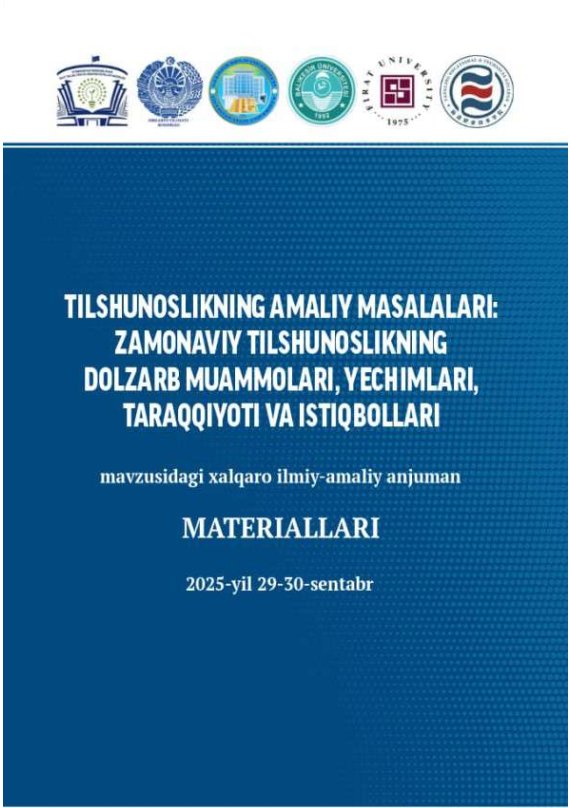LINGUISTIC AND EXTRALINGUISTIC FACTORS IN SHAPING DISCOURSE
Keywords:
language, meaning, linguistic, interpretation, syntax, pragmatics, cognitionAbstract
This article explores the manner in which the interpretive function of discourse is influenced by extralinguistic and linguistic factors. The primary focus of this study is the relationship between the characteristics of the dialogic space and the communication of extralinguistic factors. Researchers identify features of communication such as dialogicity, interactivity, non-linearity, incompleteness, and the ability to transform information. The objective of effective communication is to enable each communicator to achieve their desired outcomes while maintaining equilibrium in the communication process. This phenomenon is associated with a variety of communication objectives, including the transmission of information, the modification of behavior, and the establishment of connections. The article's analysis is grounded in the theoretical frameworks proposed by Halliday and Hu, which categorize context into three distinct types: linguistic, situational, and cultural. The focal point of this study is the manner in which cultural context influences the development of language and communicative events, in addition to the cultural expressions that emerge within the context of specific situations.
The cultural context which is considered part of the extralinguistic context, provides a comprehensive explanation of the broader aspects of the environment in which language and communication processes manifest. Furthermore, the communicative stance and speech influence theory are presented as essential aspects, as an individual's communicative stance may change in different communication situations. Speech influence techniques, including proving, persuading, suggesting, and ordering, are methods through which an individual can exert influence over another. Research indicates that methods of persuasive communication vary in their effectiveness across diverse cultural audiences. For instance, while references to the Bible are effective in the UK and the USA, references to the Quran are more influential in Azerbaijan. Discourse is evaluated as a purposeful process formed by the cognitive structures used by an individual's conceptual system and the corresponding representation tools in language. Accordingly, the article expounds on the manner in which discourse is shaped by a multitude of social, cultural, and situational factors. Furthermore, it provides an in-depth analysis of purposeful communication.


